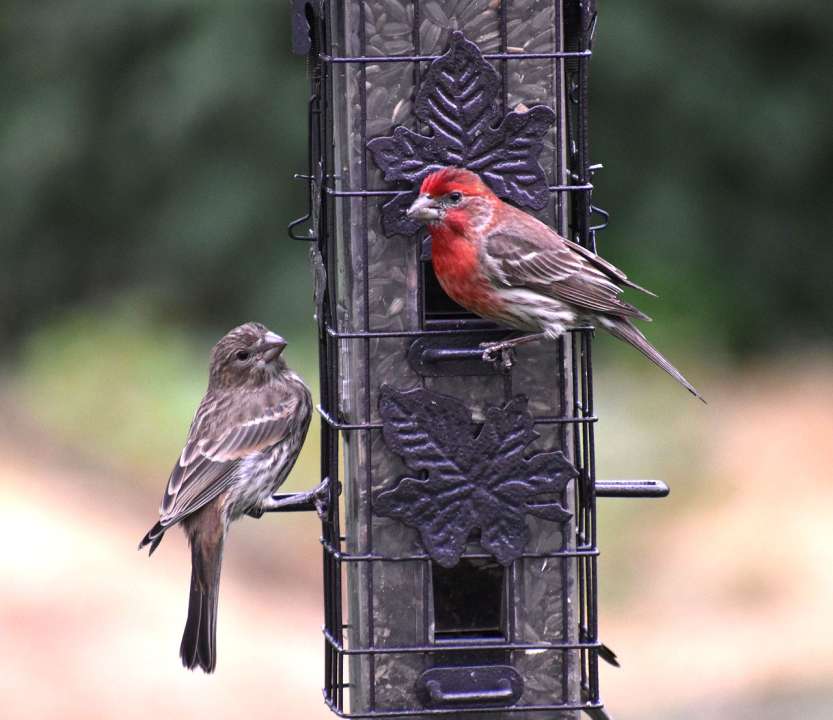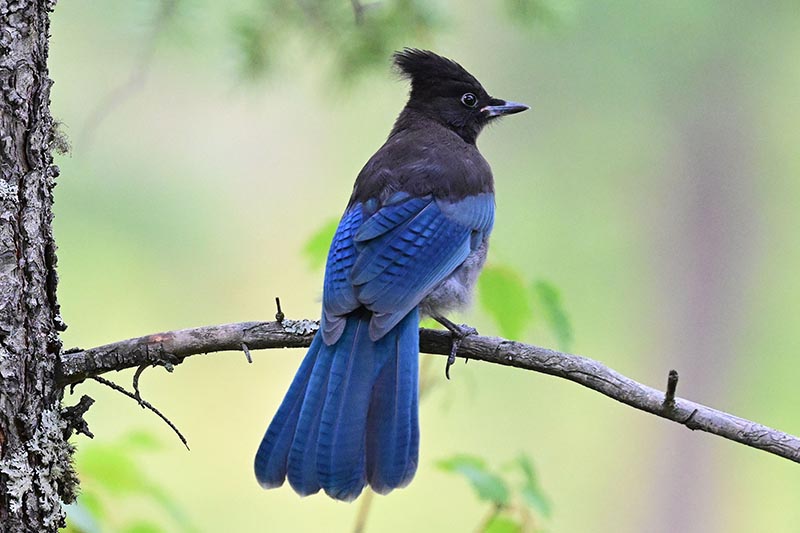Watching Feeder Birds
By Myrna Pearman, Mother Nature’s Naturalist and Backyard Birding Expert
Backyard bird feeding stations, by bringing birds into your yard for close observation, provide excellent opportunities to watch and appreciate the amazing complexities of bird behaviour.

There are two types of behaviour that birds engage in: one to maintain their bodies and the other to help them to interact and thrive.
Maintenance Behaviour: Maintenance behaviour is undertaken by birds to maintain their own bodies. Included are activities such as feeding, drinking, bathing (in dust, snow, water, rain and sunlight), scratching, plumage ruffling and shaking, tail-fanning, bill-wiping, sleeping and preening.
Social Behaviour: Social behaviour is exhibited by birds for the purpose of communicating and interacting with others. Social behaviour is easily observed around feeding stations because feeders provide a constant, rich food supply in a confined area. Birds attracted to feeders must compete with others of their own flock, as well as with other species, for the right to partake of the offerings. This competition leads to the establishment of a pecking order, with dominant birds acquiring the right to eat their fill before subordinate members may feed. The subordinates can be observed sitting near the feeders, awaiting their turn. Once a dominance hierarchy is established, the birds spend a minimal amount of time and energy fighting.
Some obvious social behaviours that occur between individual birds when interacting with others of their own species as well as individuals of other species include the following:
Displacement: A dominant or larger bird flies at a subordinate or smaller bird and displaces it from its spot.
Crest Raise: The feathers on the top of the bird's head are temporarily raised. This is often done by a bird that has just arrived at a feeder and is trying to find a dining spot.

Birds will often lift their crest when arriving at a feeding station. This behaviour is very obvious among the jays, including Steller's Jays.
Head Forward: The bird stretches forward, pointing its beak (which is often open) at the bird it is challenging. This is often used by a bird when it wants to move a subordinate out of its way. It doesn't always work.
Wing Droop: The bird raises its tail slightly while drooping the wingtips. This is a signal of aggression or dominance and is often used in conjunction with the head forward behaviour.
In addition to these body signals, birds will also exhibit alarm behaviour if a predator approaches. Interestingly, there are two main ways that birds respond to predators. Cats or other ground predators are usually subjected to a harsh scolding as the birds watch them from the safety of a nearby tree. Aerial predators are more of a direct threat, so if one is spotted, a sentinel bird usually issues a whistle, whereupon all others within hearing distance will freeze in place until danger has passed. Some flock species (notably redpolls) reduce the chances of any one bird being targeted by scattering at the slightest provocation. Finally, some smaller species engage in mobbing behaviour, whereby individuals of the same species cooperate to “gang up” on a potential predator. Blackbirds will often mob ravens while chickadees, crows, jays and magpies will often mob owls.
Have more questions? Visit your local Buckerfield's and we'll be happy to help!



